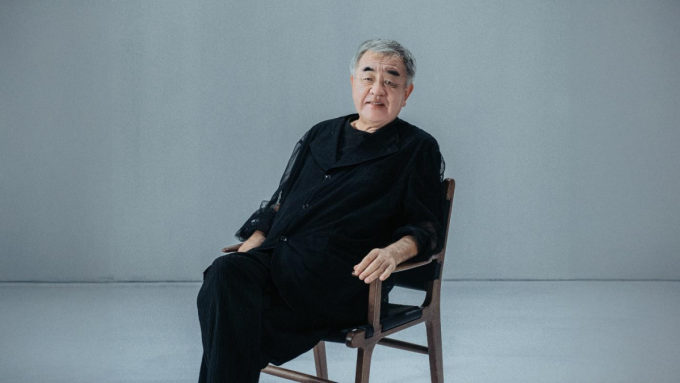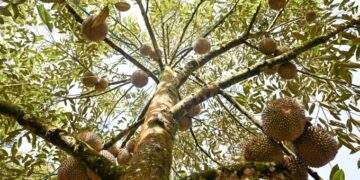Kuma, a leading contemporary Japanese architect, is renowned for his sustainable design philosophy, using natural materials to express respect for nature and local cultural identity. He founded Kengo Kuma & Associates in 1990 and has completed over 300 projects across 20 countries, with more underway worldwide.
In 2021, he was named one of Time magazine’s 100 Most Influential People. Beyond his global architecture acclaime, he is also a professor emeritus at the University of Tokyo and author of several respected books on design philosophy.
In simple worksite attire, Kuma spoke with unmistakable delight about discovering Da Lat, a city layered with history, culture, and rare mountain charm.
 |
|
Kengo Kuma, the design visionary named among Time magazine’s 100 most influential people in the world. Photo courtesy of Kengo |
True to his lifelong philosophy of honoring nature and local identity, Kuma’s arrival in Da Lat is seen as a fresh turning point for urban growth in the city. He noted that Vietnam still holds countless “hidden treasures,” and that developers’ role is to let them shine rather than reinvent them.
As a globally celebrated architect known for your selectivity, what drew you to Da Lat for your next project? How did the developer of HAUS Da Lat convince you?
Before visiting, I honestly knew very little about Da Lat. Seeing the city in person was completely different from looking at photos. From that first visit, I felt something truly special.
In today’s world, where cities are increasingly dense and warm, Da Lat feels like a dream. The cool air from pine forests, the graceful street life, and the freshness of local produce, vegetables, avocados, yogurt, everything felt alive and refreshing.
The location HAUS Da Lat’s itself is extraordinary, right in the city center, facing Xuan Huong Lake. Its terrain and landscape suggested that something remarkable could be created here. It reminded me of Karuizawa in Japan, also over a thousand meters above sea level, a retreat for people with refined tastes.
That’s why I believe HAUS Da Lat will be one of the most distinctive projects I’ve ever designed.
Even more compelling was The One Destination, the developer. They are not just building for profit; they aim to leave a lasting legacy through Vietnam’s first ESG-focused development. Sustainability and harmony with the local community resonate deeply with my philosophy, and I am genuinely excited about this collaboration.
 |
|
Kengo Kuma on site at HAUS Da Lat, examining every detail with care and precision. Photo courtesy of The One Destination |
In recent years, some people have expressed concern that the city is losing its identity amid the rapid growth of tourism and real estate. How will you ensure HAUS Da Lat preserves the city’s unique spirit while reflecting your signature style?
Many high-end resorts in Da Lat still follow 20th-century aesthetics, recreating European imagery. HAUS Da Lat moves away from that, reimagining what luxury means today. True luxury lies in simplicity, in spaces that coexist with their surroundings, feel grounded in the landscape, and connect with the community.
Wood remains central to the design, but this project is also inspired by pine trees and cones, influencing both structure and details. Stones and metals in natural hues blend with the mountain terrain, allowing the buildings to merge seamlessly with the scenery.
HAUS Da Lat is also planned as the city’s largest pine-forest preservation project. We are planting native trees and flowers, carefully shaping the landscape to evolve naturally. A key feature will be a floral gateway, crafted from fine wooden slats, bent and treated to last, creating a signature entrance for residents and guests.
 |
|
Inspired by nature, HAUS Da Lat captures the essence of Da Lat’s pine forests. Photo courtesy of The One Destination |
How has collaboration with other stakeholders helped bring your vision to life?
We work closely with contractors, discussing every design detail and material choice. Unlike some architects who hand over drawings and leave, I stay deeply involved. Debates sometimes arise, but they ensure everyone aligns toward creating something exceptional.
My team and I are regularly on-site. Nine weeks ago, I reviewed the lighting design. Today, I was there again to examine the mock-ups of each building. I prefer experiencing materials and construction firsthand, and I’m very pleased with the quality I’ve seen. At this stage, I’m very pleased with the quality of what I’ve seen, and I’m confident that HAUS Da Lat will stand among the most distinctive residential-resort projects in the world.
What advice would you give Vietnamese developers and architects aiming for global recognition?
I’ve had the chance to travel quite a lot within Vietnam. The country is geographically diverse, like Japan, with distinct climates, landscapes, and local cultures. Each region has unique colors, flavors, and character. That’s why I think the most meaningful approach is to honor that diversity. Architecture should grow from that identity rather than imitate elsewhere. Vietnam’s richness and warmth should be expressed authentically.
 |
|
HAUS Da Lat is considered one of Vietnam’s pioneering ESG-driven residential and resort complexes when completed. Photo courtesy of The One Destination |
With international developers entering Vietnam, how can the country balance growth with cultural preservation?
Vietnam is becoming a dynamic destination for luxury development. Japan experienced a similar wave in the 1980s, when global investors poured in to develop ambitious projects. But many architects then prioritized Western aesthetics, eroding local identity.
I hope Vietnam takes a different path. Da Lat is just one of many hidden treasures. The key is to recognize and celebrate each region’s distinct identity. HAUS Da Lat will demonstrate that Vietnam can pioneer sustainable architecture, blending modernity with natural beauty and cultural authenticity.





